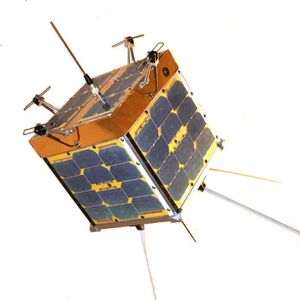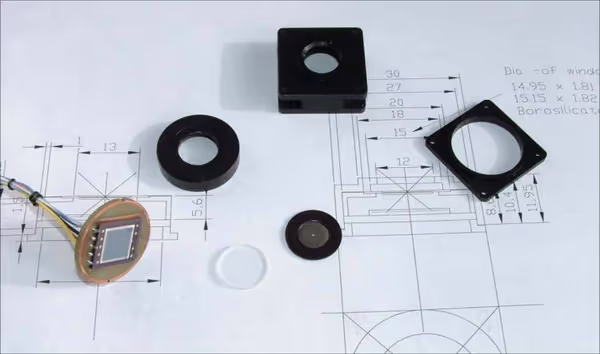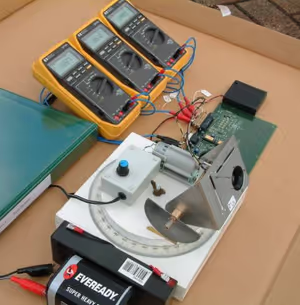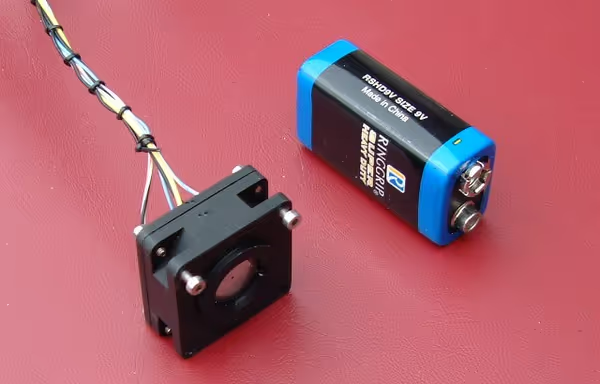KiwiSAT

Sun Sensor
It is intended to install two Sun Sensors with the Main Sun Sensor on an X or Y axis face of the ‘attic’ and a second, a Target Sun Sensor,
on the Z- face of the satellite which forms the bottom (launch mounting) face.
The two Sun Sensors are based on Hamamatsu Two Dimensional Position Sensitive Detector (PSD) Photo-diodes Type S 5991-01.

Flight components
Each sensor has a pinhole aperture positioned centrally above a 9mm square photosensitive surface which outputs
voltages proportional to the X/Y co-ordinates of a light spot which impinges on its surface. By suitably sizing the gap between the pinhole and
the photosensitive surface, the range of angular readings can be set to suit the usage requirement. It is currently proposed that both
sensors for KiwiSAT will be set to plus/minus 45 degrees ‘around the clock’.
The analogue outputs from the sensors are digitized using computational and A/D chips. These will be read and stored - along with a
time mark provided by the system clock. In addition to its angular reading, a 3 state output validation signal will also be transferred via
the telemetry stream to indicate the following states; “Sensor OFF”, “Detector Current out of Range” and “Signal Valid”. The sun sensors
will be ground switch-able via either uplink.

Prototype - Test Rig
A trial head was built and this, in conjunction with a spare electronic system PCB - donated by AMSAT-NA (our thanks to them) - was
used for system testing/proving. The trials, using the ex AO-40 board were completed satisfactorily and changes that were appropriate
to the use of the above mentioned improved tetra-lateral PSD were made prior to the production of a custom prototype PCB. This was
populated and fully proven using the prototype detector head.

Flight unit
During the trial it became clear that the head could be considerably reduced in size and a Mk2 – with a 50% saving in weight - was drawn up and two pieces were produced. The system has been tested over a period of two years and has been provisionally accepted. New PCB’s are being produced using SMT components. These will be assembled to flight standard and fully tested in the thermal vacuum test facility prior to final acceptance for flight.
August 2007
We are pleased to report that development is now complete with flight unit ready for final integration.June 2010 - All complete and installed awaiting final satellite integration.
July 2017 - Integrated and ready to fly.
